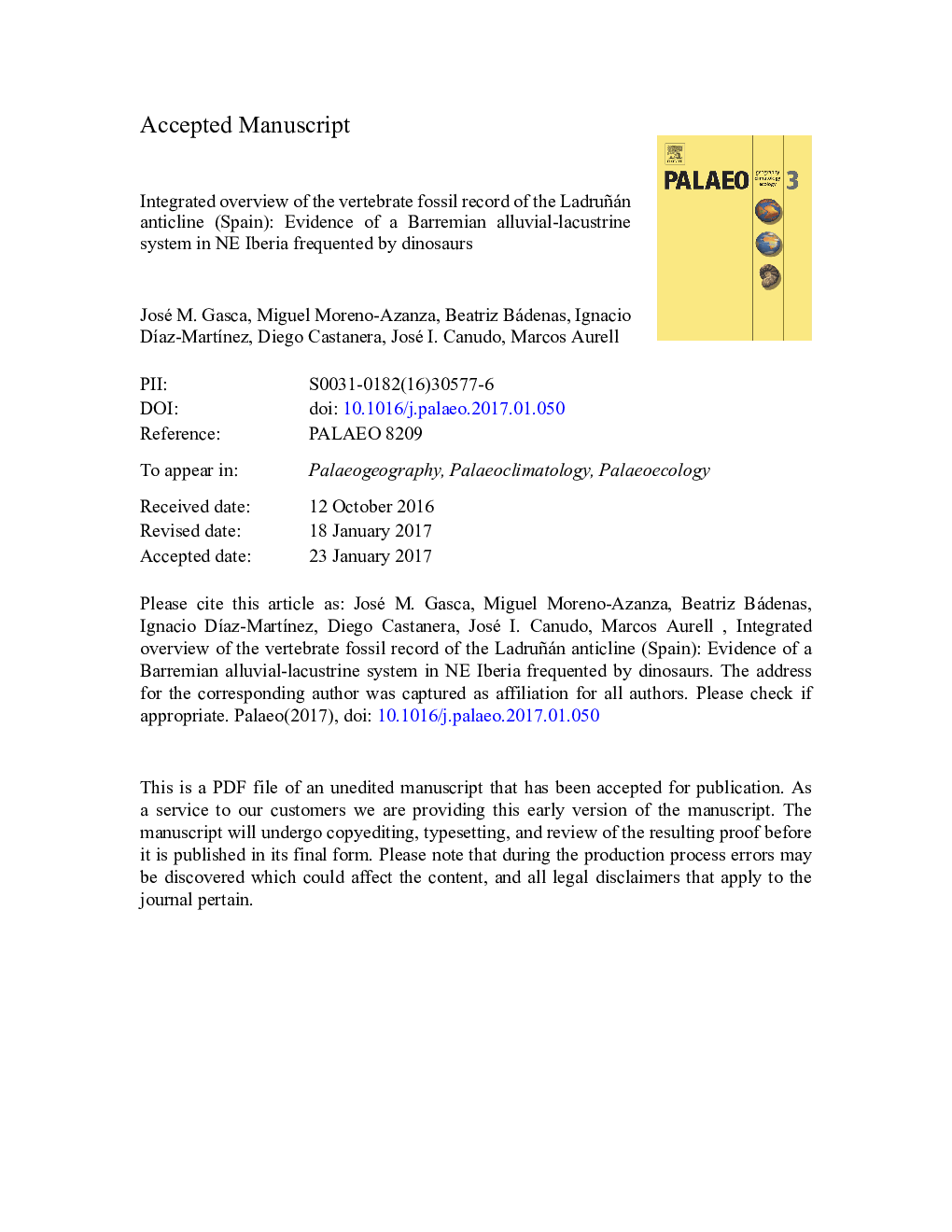| Article ID | Journal | Published Year | Pages | File Type |
|---|---|---|---|---|
| 5755871 | Palaeogeography, Palaeoclimatology, Palaeoecology | 2017 | 38 Pages |
Abstract
Most fossil remains were recovered by surface collection as well as by the usual techniques used for macrovertebrate excavations. The dinosaur record identified comprises ornithopods, theropods and sauropods. Four distinct track-bearing horizons have been identified. The heterolithic nature and aggradation characteristic of the Mirambel Formation are favourable factors for track formation and preservation. The dinosaur tracks consist of convex hyporeliefs or concave epireliefs that record the trackmakers as they frequented lakeshores, alluvial floodplains and fluvial courses. Macrovertebrate bonebeds occur in alluvial settings (poorly-drained floodplains and “ponds”). Microvertebrate concentrations are located in shallow lacustrine deposits. Isolated skeletal elements can be found in a great variety of deposits. Attritional accumulation in a low-energy depositional context is the general pattern of origin for the bone-bearing fossil sites of the Mirambel Formation. As regards the genetic framework, the resulting skeletal assemblages are predominantly the result of physical factors, with sedimentology as a key factor, rather than biological phenomena. Eggshell fragments are frequent throughout the unit but are clearly more common in palustrine-lacustrine deposits. These can be taken to be parautochthonous bioclasts from nearby areas and might be indicative of the preferential affinity of the egg-layers for wetlands and lakeshores.
Related Topics
Physical Sciences and Engineering
Earth and Planetary Sciences
Earth-Surface Processes
Authors
José M. Gasca, Miguel Moreno-Azanza, Beatriz Bádenas, Ignacio DÃaz-MartÃnez, Diego Castanera, José I. Canudo, Marcos Aurell,
